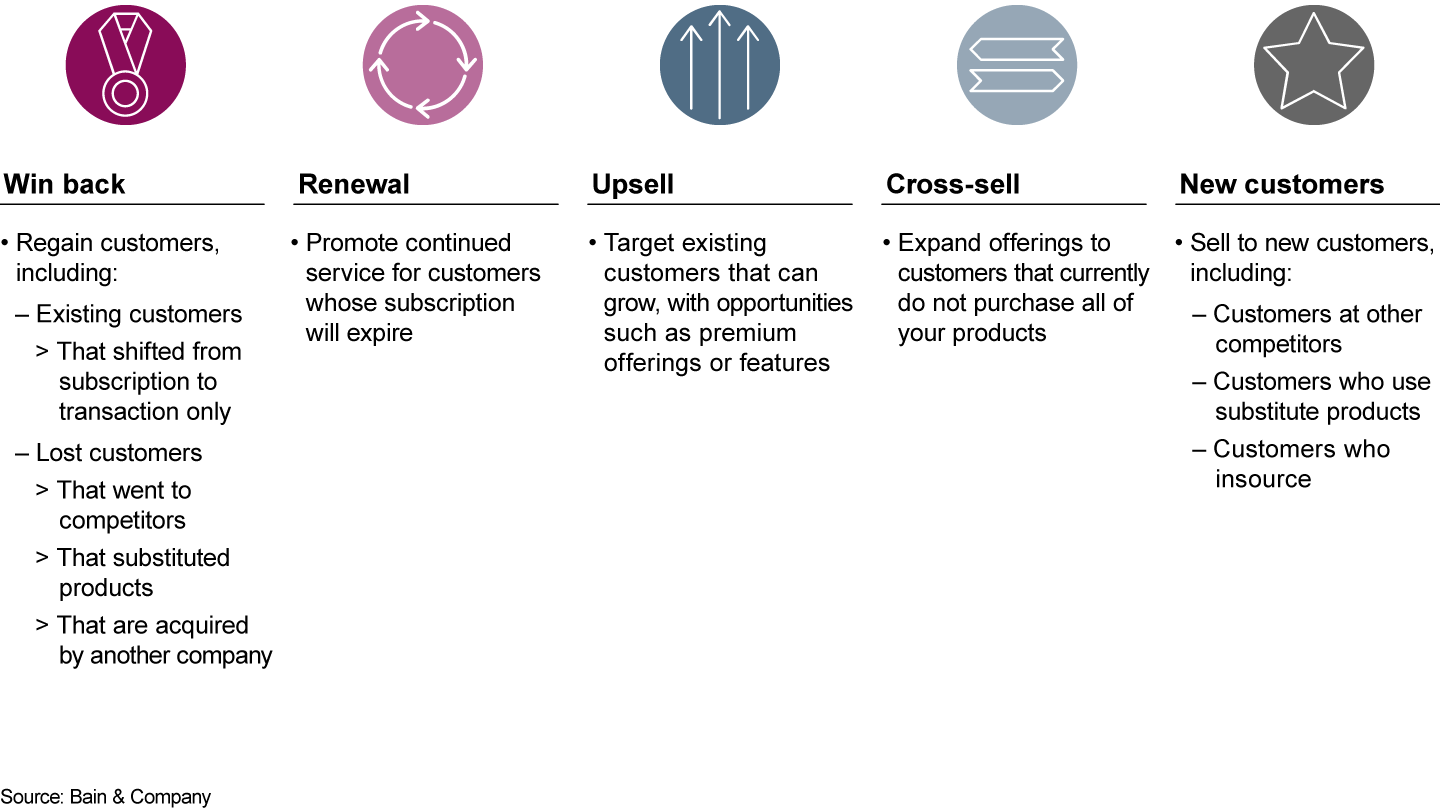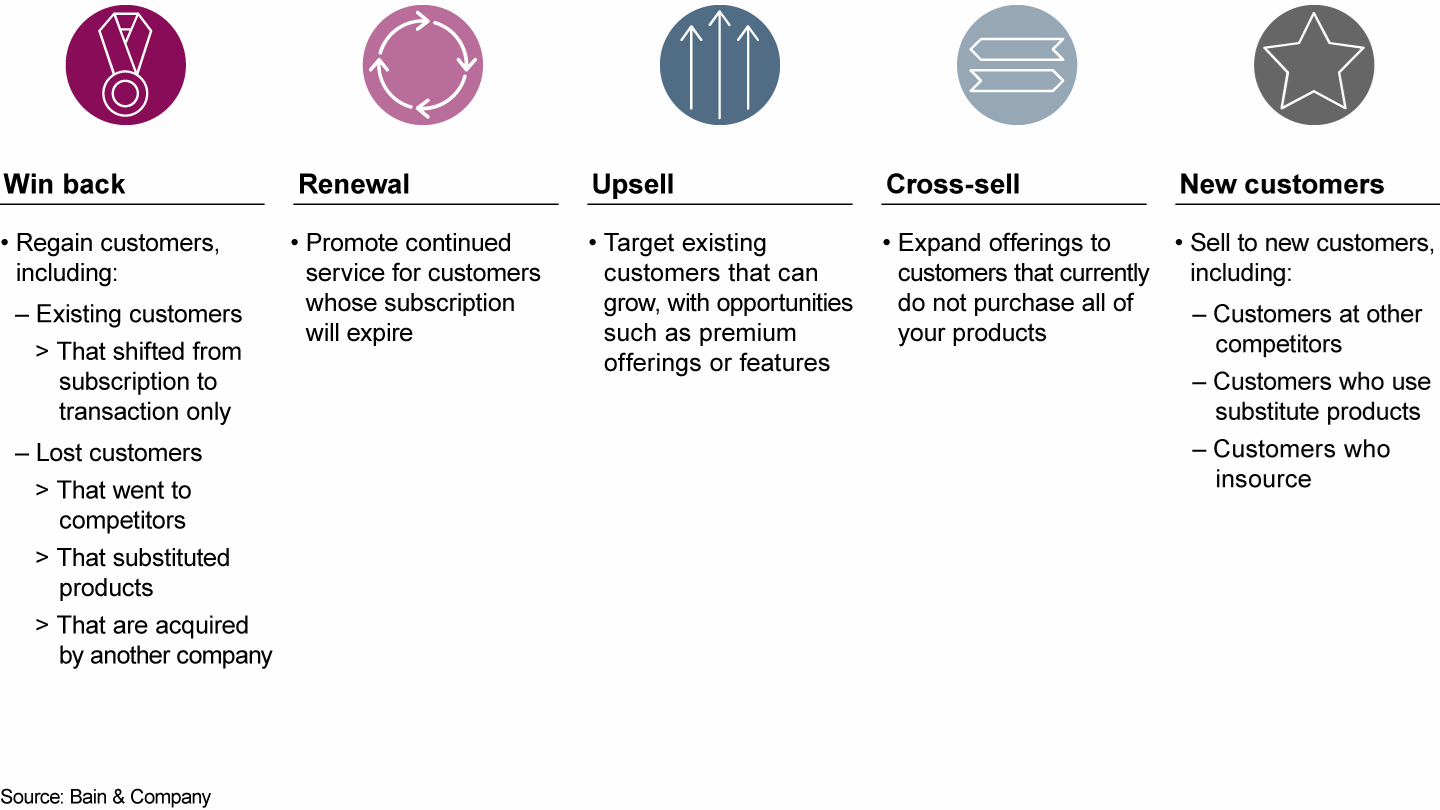Brief

At a Glance
- Sales forecasts for 2020 just became obsolete. Commercial organizations must reassess expected revenues under a much broader range of scenarios.
- Leading companies have set up a revenue win room to centralize sales analysis, add real-time intelligence from the field and rapidly deploy people to critical initiatives.
- These companies adjust pipeline percentages and run scenarios with more divergent outcomes. They also draw a map of each customer’s spending in their market, and open opportunities to capture more of that spending.
- The coming months of turbulence should roil market shares. Taking smart revenue actions now can help B2B companies build momentum and emerge stronger once the crisis abates.
Beyond the mounting human toll of the coronavirus, it has become clear that the economic consequences will be profound. Lockdowns and the shuttering of businesses in many countries put corporate and household finances at a level of turmoil and uncertainty not experienced for decades.
Covid-19 has already hammered the top line of most companies, except for a few industries such as critical goods and online collaboration tools, where demand has surged. As a result, executives responsible for revenue—CEOs, general managers and heads of sales—must act decisively to soften the blow and adjust to uncertain times. While no one can precisely predict the longer-term effects of this crisis, we do know that earlier 2020 sales forecasts are now obsolete.
Commercial leaders at business-to-business (B2B) companies have different approaches to support their customers and frontline employees. Our experience working with many of these companies in recent weeks suggests several effective practices to secure the revenue line.

Macro Surveillance Platform
For more detail on the business implications of coronavirus from Bain’s Macro Trends Group, log on to the Macro Surveillance Platform. Learn more about the platform >
Take a clear-eyed inventory of expected revenue
Assess the revenue you had expected this year and sort it into simple categories:
- Surge for products that now might be in higher demand;
- Secure for solid revenue such as contractual subscriptions from longtime customers;
- At-risk for commitment and consistency, but no contract; and
- Unknown for everything else.
Do this at a practical level of detail for customers, product or service lines and geography. When building scenarios, the range of likely outcomes usually turns out to be broader than originally expected.
In the most bearish case, think the unthinkable. For example, assume that unknown customers or products fall by 80%, at-risk by 50% and secure by 5%, while surge products increase by 20%. This helps to stake out how large the challenge might be, and allows you to shift sales capacity and other go-to-market investments.
Demand at one critical IT infrastructure provider, for instance, is surging for certain products and service lines, such as collaboration applications. But the company expects an overall decline on more discretionary items that can be delayed. It has categorized some of the latter as at-risk and others as unknown.
Reinspect the entire pipeline
Work the math backwards to adjust pipeline percentages and run scenarios with more divergent outcomes. After all, an opportunity with 80% probability remains $0 until it converts.
Use this exercise to separate the most critical deals with strategic customers from more speculative opportunities. Buyers currently want to minimize risk, so they’ll tend to favor trusted partners and suppliers. Mobilize all available resources to clear blockages and keep the most critical deals moving through the pipeline.
Mobilize through a revenue “win room”
By win room, we mean a versatile command center that lets executives take rapid, decisive actions. In times of high uncertainty, the pace of decision making increases dramatically, as does the demand for information needed for clear, concise and prescriptive guidance to the front lines. A win room serves as a clearinghouse to absorb the analysis underway, add real-time intelligence from the field, rapidly deploy and reorient people to critical areas, and actively track the situation as it unfolds.
Run the win room with Agile principles—daily stand-up meetings, distributed discrete actions and rapid micro redirections within the working team. Keep the team small and running one- to two-week sprints to avoid whipsawing the front line. Inside the win room, dedicate a few people to run a sales-play factory—a place to create market-ready plays composed of specific offerings to target segments, as well as incentives, marketing support, sales collateral and training (see Figure 1).

Two cautions for operating a win room. First, make roles and accountabilities crystal clear. Put on the hat of coach with a novice team; make sure each team member knows where to be on the field and what to do. Strong directives will help mute their anxiety.
Second, keep things simple, because customers’ and sales reps’ ability to absorb more information diminishes in stressful times. Prescriptive sales plays should have simple offerings and messages.
Companies can also use the win room as a laboratory to see what works best. One software-as-a-service company’s win room changed the features, packaging and pricing of a core offering to make it more suitable to the current environment, then mobilized the inside sales team to take it to market—all in under a week.
Draw a spending map
Create a map of how much each customer spends in your market, and open opportunities to capture more of that spending. Most companies have a rough sense of the size of their markets, but few translate that into spending by individual customers.
A spending map informs all coverage and capacity decisions. It also raises the return on investment for lead generation, sales-play deployment and account-based marketing.
Such a map helped one fiber technology company more than double the size of its market, by evaluating how much each customer could spend.
Integrate with everyday business
As the crisis stabilizes and ultimately subsides, the win room can become the engine for any commercial priority. Leading companies use win rooms to substantially boost renewals and cross-selling, launch new products, test new offers and generally increase the speed and agility of revenue operations.
One technology company has used the win room, spending map and sales-play methodology for years, through normal and extraordinary times, to systematically grow and increase its market share.
If past periods of turbulence serve as a reliable guide, the coming months should significantly alter market shares in any given industry. Smart revenue actions taken now can position B2B companies to build momentum to take share and emerge stronger once the Covid-19 crisis abates.
Jamie Cleghorn and Jonathan Frick are partners with Bain & Company’s Customer Strategy & Marketing practice. Wade Cruse is a partner with Bain’s Strategy practice. They are based, respectively, in Chicago, London and Singapore.
